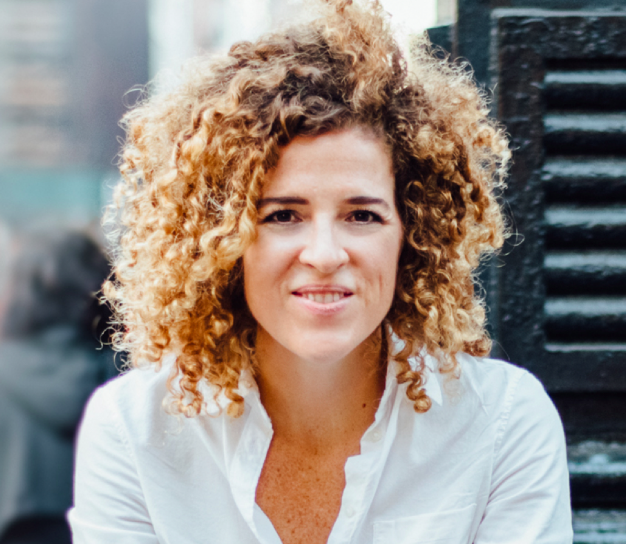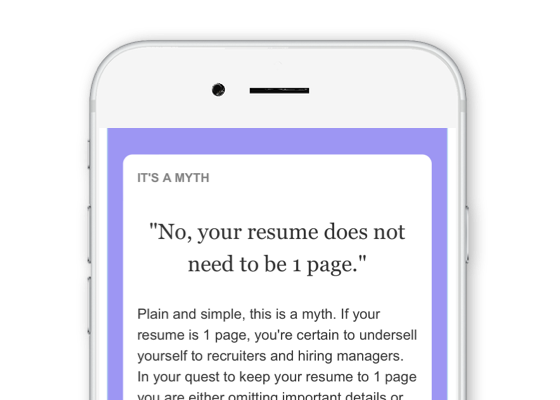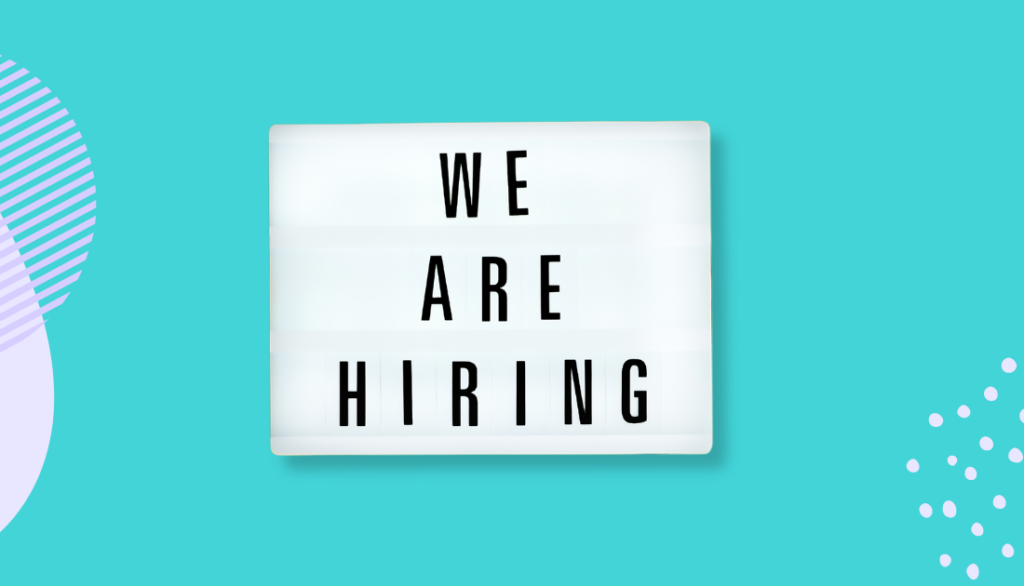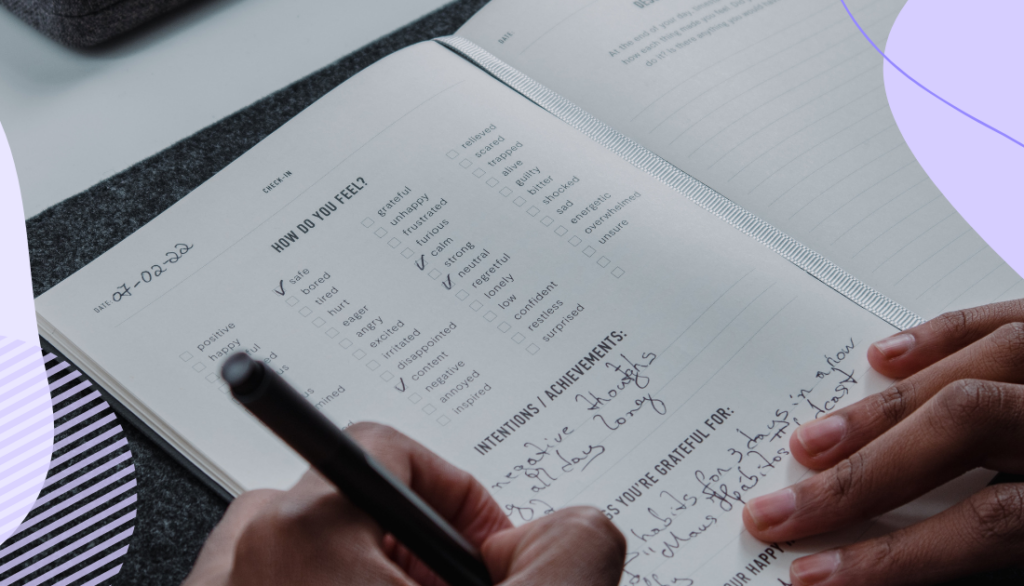Episode 67
Interview with Cheryl Platz: UX Portfolios, Storytelling, & Hiring Process Insights
57 min listen
Episode 64
57 min listen
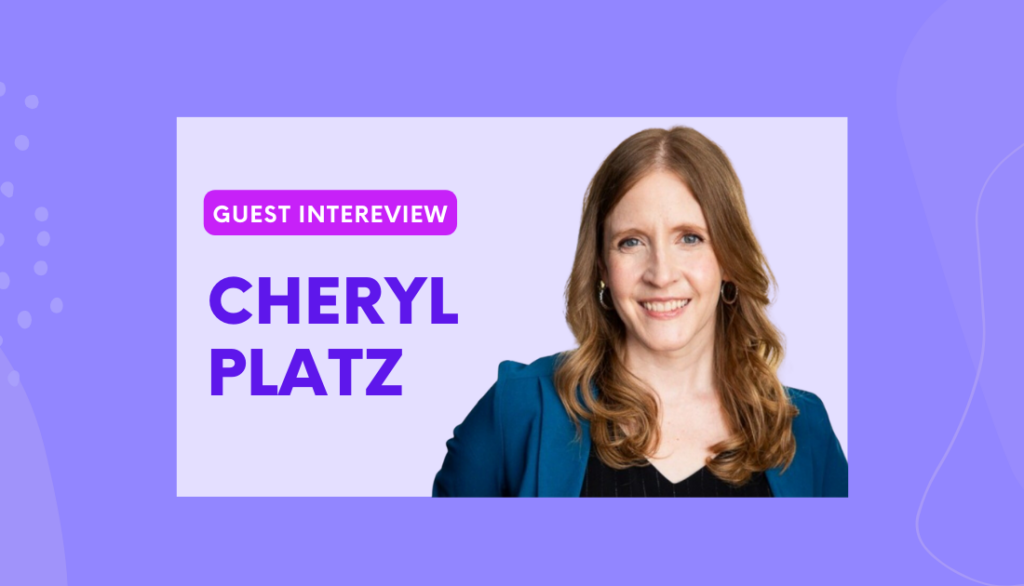
Listen to the Episode
Episode Summary
Stepping into the job market can be as tricky as solving a puzzle. In this episode, Cheryl Platz, a Director of UX, shares actionable tips and strategiest to help UX job seekers stand out. Find out how to assemble a portfolio that not only spotlights your skills but also the real difference you’ve made in past roles—even if it’s not measured in dollars. Uncover the power of storytelling in shaping how you present your work experiences and how it can catch an employer’s eye.
Cheryl opens up about what worked in her own recent job search, emphasizing the importance of responding to feedback and truly connecting with those who might hire you. She sheds light on using platforms like LinkedIn to your advantage, where sharing your stories can lead to surprising career opportunities. The interview with Cheryl also covers her experience hiring UX professionals and she shares how she evaluates UX portfolios, the art of interview storytelling, and navigating career changes.
For anyone looking to begin, shift, or climb the career ladder in UX (or elsewhere), this episode is packed with down-to-earth advice that can guide your next professional steps.
Create your dream career, and life
- Book a free Career Strategy Call to learn how we can help you
- Get our free Career Roadmap to help you navigate your career
- Check out Career Strategy Lab, our 3-month career coaching program
Discussion Questions About The Episode
- Considering Cheryl's emphasis on storytelling in portfolios, how might you reframe your projects or experiences to better convey the story of your professional journey?
- Cheryl spoke about the importance of showcasing various types of impact in one’s work. How have you made a difference in ways other than financial profit, and how can you communicate that to hiring managers?
- Reflecting on advice from Cheryl and Sarah, what steps can you take to align your professional materials more closely with the specific needs of future employers?
- After hearing about the importance of community engagement, how do you plan to use professional networks like LinkedIn to foster opportunities for your career growth?
- Cheryl and Sarah discussed the power of constructive feedback. How have you dealt with critical feedback in your career, and how did it shape the way you present yourself to potential employers?
Episode Notes & Learn More About Cheryl Platz
To learn more about Cheryl Platz’s work including her book, speaking, design, acting and more, check out these links:
- Get Cheryl’s book, Design Byond Devices and save 15% with the code STRATEGYLAB24 until May 2, 2024
- Read Cheryl’s Medium articles on design career advice, case studies, and expanded content from her book
- Check out Cheryl’s design education company, Ideaplatz, along with her personal website
And, you can follow Cheryl on LinkedIn, Mastodon, Twitter (X), Twitch
Episode Transcript
Sarah Doody [00:00:00]: Hey there. I’m Sarah Doody, host of the Career Strategy Podcast. Many professionals are seeking more impact, flexibility, growth, and let’s face it, getting paid what they’re worth. But how do you unlock this in your career? It starts with strategy. I’m taking you behind the scenes of what’s working for my career coaching clients. You’ll hear strategies and actionable, yet sometimes against the grain, advice for how you can be the CEO of your career and stop dreading Mondays. Ready to level up your career? Let’s get after it. Alright.
Sarah Doody [00:00:38]: So first of all, I wanna tell everyone, Cheryl and I met in Lisbon, Portugal. Cheryl, I was trying to remember what year. I feel
Cheryl Platz [00:00:46]: like it might have been 2017.
Sarah Doody [00:00:48]: Yeah. 2017, 2018. And Cheryl and I were both speaking at this great conference, if you ever wanna go to Portugal, called UXLX. But, Cheryl, last night, I dreamt that I went to Portugal, and I became friends with a bunch of the people in the HBO docuseries a 100 foot wave. Have you watched this?
Cheryl Platz [00:01:13]: I have not. No. But I watched gosh. Listening.
Sarah Doody [00:01:16]: So the 100 foot wave is all about these, like, amazing people who are in pursuit of surfing 100 foot waves, like, 2 hours north of Lisbon. I’m obsessed, but, anyway, it was ironic because I’m talking to you, and we met in Portugal, and I dreamt about Portugal last night. So I thought I’d tell you.
Cheryl Platz [00:01:35]: Calling you. It’s calling you back.
Sarah Doody [00:01:37]: Right? So, a little bit about Sarah, and then, Cheryl, I’d love for you to kinda fill in some gaps. But Sarah, graduated from Carnegie Mellon with a bachelor of science in or in computer science, and a degree in human computer action. And early in Cheryl’s career, she worked in gaming and in theme park technology, did stuff for Disney, which is pretty cool, and then kinda moved over to enterprise cloud software, let’s say, with Microsoft and did some work with the Gates Foundation around philanthropy, and then moved over into consumer tech and worked on Alexa at Amazon, and is most recently in the, UX for gaming and had previously just, been working at Riot Games, and Sarah also does a lot of writing and speaking. She has a book. She does workshops and things like that. But, Cheryl, I know that was a brief intro, but I’m curious, you know, in your own words, how did you kinda get to where you are today? And I’m curious, especially, like, what led you to study human computer interaction, and what was kind of the impetus for your interest in game design? Great questions. And, a plus for, like, a concise summary of my career because that’s a very advanced complex problem. Yeah.
Sarah Doody [00:03:14]: You’ve kinda, like, done UX and and design in so many different contexts, and I think that’s what makes your career really interesting.
Cheryl Platz [00:03:22]: But and thanks for having me. It’s so nice to to meet meet some of your your crew. And I’ve just I’ve loved, like, I’m so glad we met in Lisbon. I I’m I love your program, and it’s so nice to have people in the UX community who are focusing on early career and people who are trying to get rehired or do career shifts because it’s so important. And people who have been in the industry like me get so many people asking, like, how do I break in? I’m like, I don’t know. It’s been 20 years. Everything changed. Don’t ask me.
Cheryl Platz [00:03:50]: It will be bad advice. So, as you mentioned, I, yeah, I’ve trained in computer science and human computer interaction, and the reason I went for human computer interaction was, I had always went, like, in high school, I was drawn to technology and art. Like, I was literally looking at, like, Rhode Island School of Design, and, like, I had an art portfolio, and I was also an AP Computer Science. Science. I was like, I don’t know what to do. I want to do both of these things. And, like, I got into MIT, but then, like, Carnegie Mellon, when I I I got into that school, but it was like a last minute application. And so when I went to go visit, I saw this professor, Randy Pausch, give a talk, and he I put up the slide about their relatively new human computer interaction major.
Cheryl Platz [00:04:33]: And he’s like, it’s a combination of cognitive psychology, visual design, and computer science. And it was like an arrow hit me in the heart. I was like, that that’s the thing. That’s what I’ve wanted to do this whole time. And then he said he he was an imagineer. I’m like, oh, and I also need to meet that specific person, and that’s when I did the Disney work much, much later. But that’s what I always loved and continue to love about Carnegie Mellon is their interdisciplinary focus, that for people like me who who enjoy multiple things. And ironically, now I, starting next week, I am a Carnegie Mellon professor.
Cheryl Platz [00:05:04]: So, that’s that’s, in video games. That’s the one I didn’t see coming. Circle. Yeah. Yeah. But I’m very grateful for for all of that time and the the like, if if anyone’s, like, looking ever looking for, like, a master’s in HCI, I continue to say say that’s one of the best programs in the industry. I continue to, like, go think back to my undergrad training in HCI, and that stuff still holds years later even though we trained on Palm Pilots. Now game design is interesting because when I was a, this is gonna date me a little bit.
Cheryl Platz [00:05:33]: So, you know, like, don’t don’t judge me too much, but, when I was a senior in college, the 2 weeks before our senior job fair, those planes crashed into those towers, And the, you know, the market blew up. It just, the the dotcom boom happened, and so I’m a computer science major. And I had a design job lined up. I had interned at Maya Design in Pittsburgh, and, I loved them. They loved me. It was great, and but that job ended up going away, because their major clients were banking sector clients, and that they did not survive that that downturn. Maya did, but they did weren’t they were wisely not in the position to take on new hires, and, you know, I still had a year to, you know, recover. So, I mean, if you have to make a tough choice, that’s the tough choice to make.
Cheryl Platz [00:06:24]: And, you know, I’d still keep in touch with all of them, and it’s fine. So I was like, oh. But that job fair was so surreal. Most of the recruiters were like, I can take your resume, but I don’t know if I’m gonna have a job in 2 weeks
Sarah Doody [00:06:38]: Right.
Cheryl Platz [00:06:39]: As a student. And it’s like, oh, okay. Well, if I’m gonna be broke, I might as well be broke in learning something. So the Entertainment Technology Center at Carnegie Mellon had been just spinning up, and that, you know, Randy Pausch, who I just mentioned, was one of the the really sort of leading professors at Carnegie Mellon at the time had started that program, and so I applied. I I had never thought about going to a master’s program, but I was like, I’ll give it a shot. And I got in, And that’s where I got to study game design under Jesse Schell, who actually Yeah. Has book here because I’m working on my course. Like, Jesse Schell did the art of design book lenses, and he hadn’t written that at the time.
Cheryl Platz [00:07:15]: And I always thought game design was something other people did, like, will write in other people. I never thought of it as something that I could do, but Jesse’s class changed that for me. He was so supportive, and he’s so good at what he does. And I came out being like, oh, I’m actually like, I’ve gamed on my whole life, and this actually feels really aligned. And that’s what kind of led to me, seeking out a job at Maxis, which made The Sims, and, becoming a producer there. Because at the time, UX and games did not exist. So me having a user experience degree had no no one was like, I don’t they were like, I don’t understand what you Doody. I’m like,
Sarah Doody [00:07:52]: that’s Right.
Cheryl Platz [00:07:53]: I have other skills. I’ll, you know, I was doing some producing at my grad school, and so I did that in games. And so I I did writing for games. I did UX, you know, as part of, like, my production role, but I also did, like, running the teams and client relations and a bunch of other stuff. But in the end, I learned very early on that game design and UX design are sister disciplines. And Riot Games treats them that way, which I thought was, very interesting and aligned with my own beliefs. And the way I’ve been talking through it when in my current interview rounds, you know, for people who are like, what’s your perspective on the relationship between UX and game design? Like, well, look, UX design well, game game design is user experience design where you’re using friction intentionally. You’re you’re using it to create a sense of mastery over time.
Cheryl Platz [00:08:46]: It’s a game design is UX design where you need a heavy context story. You need, you need a whole bunch of things that we might not necessarily utilize in UX design. And we and it’s, UX design where you it’s not necessarily great to rely on existing patterns. Like, novelty is valued. Right. And I also talk about expertise that we tend to to, rely on. Like, game designers Sarah often really great at motivation, while, UX designers tend to specialize in perception. And if the like, you know, if you’re, like, late in your career and you’re specializing in these things.
Cheryl Platz [00:09:25]: So at a company that has both roles, those two things combined can be very powerful. But somebody who’s focused on game design isn’t actually necessarily gonna be, like, focused on, like, is somebody where is somebody gonna look first or
Sarah Doody [00:09:37]: Right.
Cheryl Platz [00:09:38]: Or, like, the frequency of tasks. And that’s why in your favorite games, even though there’s very talented game designers, like, you know, Pokemon art legends, love that game, but, like, why do I have to hit twice to to, like, move 1 pokeball between 2 things? It’s because, like, you you know, UX is not always viewed separately, and game designers are more focused on the game loop and behavior and things like that and less about perception and and, like, you know, optimization of of core tasks. But they’re very closely related. And so, you know, there was a variety of reasons I left, the games industry, but it felt like the right term time to come back when the right opportunity came, and Mhmm. I’m I’m very excited to be back.
Sarah Doody [00:10:20]: Well, it’s one thing that strikes me about your career is that, you know, you you started in game design, but as you said, UX is such a transferable element, let’s call it, that is needed in so many types of interactions or products or services, whether it’s game design, whether it’s enterprise software, whether it’s consumer stuff like you did with Alexa. And I think, you know, one could argue, oh, well, you’ve been out of gaming for too long. Like, how do you think you can get back in? But to your point, it’s less about the game expertise and more about what UX brings to enhance that gaming experience because it’s kinda transferable.
Cheryl Platz [00:11:12]: It’s yeah. It it is transferable. I think, you know, if you look at, like, the the job description of product management Mhmm. Often, there’s a very strong overlap with UX with additional qualities. So someone’s looking to, like and, you know, there’s memes about that. Right?
Sarah Doody [00:11:29]: We Right.
Cheryl Platz [00:11:30]: We don’t have time to unpack all of that. But, you know, for for me and that that switch, especially because, like, my previous employer going to Riot was the Gates Foundation, which are, like, 2 they’re they’re very different Very moments. But, you know and and I also kinda did a lane swap because I was an IC at the Gates Foundation, but I went into, senior leadership at Riot. But, you know, going into that job search, I knew I wanted to go into senior leadership. I I had been effectively doing senior leadership at, the Gates Foundation because my previous manager had been let go, and so I was, like, doing a lot of the things that he had been doing, but on a smaller scale. And so I knew I always know that when I interview, it’s a challenge for me because people like to put people in boxes that I do not fit in a box. Mhmm. But I also have learned, like, when I’ve done lane shifts or industry shifts, for me, it’s about understanding my, potential employer as a client or a customer and understanding how my how I can take what experience I have, align it to as much of the job description as possible to minimize risk, and then be clear about what parts are the growth for me.
Cheryl Platz [00:12:41]: And so for Riot, the role I had was director of UX for the player platform. And so that was a very interesting specific role, because it wasn’t on a specific game. It was a large scale, and that was a very like, my enterprise experience actually was a very strong draw for that role. They also wanted someone it was an 80 20 role where, like, 80% of my job was managing a team of 16 designers, but 20% was managing the concept of UX across all of Riot for a team for, like, what was started out as 35 UX designers and went up to to Sarah by the time I was there and the time I left. And that that was a lot of, you know, thought leadership and mentorship and, those sorts of things. And that you know, the talks and the engagement with the community and those things, really aligned in a way that a lot of their candidates might not have been able to do. And so, you know, I looked at that role, and I’m like, I I see myself in this. Mhmm.
Cheryl Platz [00:13:39]: Yes. My games experience is a little age, but I actually have that too. So I just need to I need to pull that forward, you know, make sure I have an updated case study from, like, my most recent game, Disney friends. And then how do I minimize the risk by talking about how my enterprise experience generalizes to player platform? How do I, talk about how my speaking and teaching experience generalizes to being craft leader, and then the the only risk we were talking about was the gaps in my experience for being director level. Like, you know, things like I hadn’t necessarily managed someone, who is in, you know, performance development space yet. You know, a couple of things like that. And I was very clear about those opportunities and also very clear about where I felt all my experience aligned. And then it it was like, everybody was on board.
Cheryl Platz [00:14:30]: We were super aligned. And that’s that, like, risk mitigation strategy is definitely something I do when I know I’m lane swapping at anything, industry, title, whatever.
Sarah Doody [00:14:40]: Mhmm. I I love how you just went through this this use case of you, you know, seeing this job description at Riot and then really studying it and thinking critically and about your previous Experience. And like you said, assessing the risk of, okay, I have this, but maybe not that. So let me shine a spotlight very strongly on the experience that I do have and come up with a game plan for how I’m gonna address any gaps that they kind of might bring up in the interview, etcetera. And I think that’s so important because that’s something we really stress all the time is that and I I love you User the phrase, I forget the exact phrasing, but it was something along the lines of, you know, thinking of your potential employer as your customer. And it goes in line with what I talk about, you know, treating yourself, your career as a product. And, like, at the end of the day, you are a product that the consumer, the business, the hiring manager, is hiring. And when I’m curious what you think, but my hunch is that when you think like that, it also helps you be a little bit more strategic and methodical and kinda hopefully turns down the volume on some of, like, the emotion and negative talk that might go through your brain is maybe you think, oh, well, I’m not qualified for this because I don’t have these things, instead of thinking, actually, I do have this experience over here.
Sarah Doody [00:16:14]: Let me really sell that to the customer. You know what I mean?
Cheryl Platz [00:16:19]: No. I totally agree. It’s, like, I agree with the mindset. I think you’re spot on. And, you know, there’s been times where I it went through a whole interview loop, but I got feedback that, oh, we weren’t with another candidate because we didn’t feel you had blank. Right.
Sarah Doody [00:16:32]: When I
Cheryl Platz [00:16:32]: hear blank, I’m like, I do have blank. That’s not about me. It’s about the storytelling. It’s about how I position myself as a product. I either didn’t understand the client or didn’t understand the signs. Sometimes, let’s be frank, like, I I have multiple intersectional, like, like, identities, and sometimes it’s moving the goalpost where they did not communicate the blank Right.
Sarah Doody [00:16:57]: And they come up with
Cheryl Platz [00:16:57]: the blank at the end. But, also, there’s times where I did not communicate the blank, and it was there or there were signs. And that’s you know, then I take that in, and I incorporate that. You know? My current job search, I went, like, 6 months with a company. And at the very end, they were like, hey. We don’t think you’re deep enough a fan of the game. And they didn’t really communicate that as a requirement for 6 months. And so we could we don’t have time to unpack all that.
Cheryl Platz [00:17:23]: But I was like, okay. Well, I’m gonna, you know, take that, and I’m gonna incorporate that experience into the next interviewing experience I have and make sure that, when I am interviewing on a game that exists, I’m doing even more to show that I am dedicated to, that game and, learning that game. Because, like, my whole brand is, you know, I am a quick learner, and I do take it seriously. Like, I didn’t when I went back to Riot, it wasn’t like I was a league main, but, I ended up, like, for the first time in my life, really playing, like, ranked play in games. And I finally hit gold in TFT by the time I, got laid off, which was very ironic. But, and so, you know, the most recent job interview loop I went through, I was like so I was very shameless. Like, I wore T shirts from the brand of the game Nice. Interview, with a blazer.
Cheryl Platz [00:18:17]: You know? Dress for the job you want. And, every day, I had different ones because it’s a brand I really love. And, I was also, like, updating them on, genuinely, like, I kind of got addicted to the game. Like, I’m level 32. I’m level 40. I got my my husband playing the game, and that really connected with them. Because in the end, there are people who are passionate about the game, and they want people who are passionate about the game. And that to be honest, that’s I remember being EDA and and having people who worked on the sims and weren’t passionate about it, and I was confused.
Cheryl Platz [00:18:47]: Like, how do you get there? There’s so many people who love this game. How did we get to this place? And so that’s kind of specific to games, but if you abstract it, it’s it you know, figuring out what kinds of signals you’re getting from the market and figuring out whether that’s something you can adapt to when you’re interviewing.
Sarah Doody [00:19:04]: Right. I I wanna touch briefly on your experience on the candidate side since we’re kinda there right now, and then we’re gonna flip to your experience on the hiring side of things. But as a as a candidate, while it’s maybe fresh in your mind, are there any things that you think, in addition to what you just described, really helped you stand out or manage the the job search process most recently? Well,
Cheryl Platz [00:19:41]: you know, I am LinkedIn gets a lot of, crap Yep. Really, but I am grateful that that tool exists. The most fruitful job and I I did a whole bunch of cold applications, and I did get a couple pings from them, which I was very surprised by. But, the the job at like, the the job that I’m in most close talks with
Sarah Doody [00:20:13]: Right.
Cheryl Platz [00:20:14]: And, you know, we’ll see if there’s again, I’m hoping there’ll be an announcement very soon, but, you know, just getting the last few details. But that came from someone seeing my posts. And I had early on, you know, when I posted about my you know, when I got laid off, not a fun moment.
Sarah Doody [00:20:32]: Right.
Cheryl Platz [00:20:32]: But, you know, I I said to myself, I’m like, well, now is the time to lean on the community and on the work I’ve done and, you know, maybe speak up about some opinions and things that I’ve had that I have not been engaging on because I’ve been so focused on my current work. And so I did. I leaned in. I engaged with the laid off community. I engaged with the moment. I shared some articles about some of the work I had been doing, and I had some people reach out to me and be like, I don’t know. Like, your your post just showed up on my feed when I was looking for someone at the right time. And so, you know and I’ve talked to some people, like, who I’m mentoring or, like, who other people in, like, lay layoff groups who are like, I don’t I don’t know.
Cheryl Platz [00:21:13]: I don’t understand LinkedIn. I don’t know if I’m like LinkedIn does work for you when you are not working. And I know it’s you it’s tough because you you log into LinkedIn, and if you haven’t been nurturing and then following people that you value opinions of, you log in and it’s like raw TikTok. It’s just like, who are these people? Right? Classic positivity, and what is this hustle? There are, especially in UX, wonderful conversations out there really, like, some and, like, a genuine thread of stuff that’s worth engaging in. And if you do, even if it’s just commenting, even, or, posting an article and sharing your lived experience that enhances that article
Sarah Doody [00:21:58]: Right.
Cheryl Platz [00:22:00]: There are always people who wanna get where you are, or you have a unique perspective based on your lived Experience. You’re in intersectional identities. And as you develop your voice, you’re gonna start popping up in other people’s feeds. And, and other people’s feeds are gonna start getting exposed to you, and you might find a hiring manager you didn’t expect to find or a recruiter you didn’t expect to find. And so engagement with the community, I’m like, you get it what out what you put in.
Sarah Doody [00:22:26]: Mhmm.
Cheryl Platz [00:22:26]: And I’m grateful that the community’s there. I’m grateful that the community has supported me, and, that has really helped me on on all fronts during this this, I would also say, like, if you are part of a moment, like, a layoff moment or something, look for communities to participate in. There are so many Yeah. Discords and Slacks, people who wanna help other people and and connect.
Sarah Doody [00:22:54]: And I’ve met so many people through this
Cheryl Platz [00:22:54]: process, and I’m so grateful. And so those those support systems are out there, and it’s one of the like, one of the few silver linings of having to go through a mass sort of, moment like this is that you you that that trauma bonding with other folks, you you get that. And the other people who were, who had the benefit of being stable do not get that. Yeah. Full advantage of it, and, build those net because net as we all know, networking is important. Sometimes you get networking because you worked with people. Sometimes you get networking because you went through an event, but use that opportunity.
Sarah Doody [00:23:29]: And you you never know where these relationships might come back to you 2, 5 years from now. You know? I mean, sometimes I definitely have had people from my past that I haven’t heard from in years, you know, either bring me opportunities or I bring them opportunities. And love it or hate it, LinkedIn is this awkward place that connects us all. And if you can kinda get over your personal feelings about LinkedIn and look at it as a a tool to use in your career, And I think also, you know, not feel pressured that LinkedIn is kind of an an all or nothing platform. And by that, I mean, you don’t have to have every post get 200 likes and comments and go viral. Like, it’s like I say about the size of your network. It’s not about the size the the amount of reactions to your post. It’s the quality of interactions and who who those posts and comments are reaching, like you said, because it was because you were posting not essays every single day, but simple posts to to boost your visibility if I’m understanding correctly.
Cheryl Platz [00:24:45]: I knew it would benefit me because it it does boost my visibility, and I’m like, hey. I’m bored. I’m laid off. Let’s have my expectations. Like, let’s just see what happens.
Sarah Doody [00:24:54]: Yeah.
Cheryl Platz [00:24:54]: But your point about it being quality over quantity is so true. And I have a story I tell people about that, which relates to how we met, which is, UX Lisbon. I had just started my medium writing career in early 2 2017 because I had given a workshop at, at interaction Sarah, and it was only, like, 30 people. But there were so many more people who had asked me questions about that workshop. It was on voice design. And I was
Sarah Doody [00:25:18]: like, you
Cheryl Platz [00:25:18]: know, it feels like a moment. I’m gonna write up some of the things some of the insights from the workshop in a post. And, like, the Microsoft design blog posted a and, you know, it did it did some numbers. It wasn’t, like, super viral. And I posted a couple of other Medium articles, and they had much smaller readership and everything. And, you know, and I just kinda went about my day, and it went about my life. And a few weeks later, I get an email, and someone and someone’s like, would you be interested in coming to Lisbon and speaking? And I’m like, I’m so sorry. I don’t have any more travel budget.
Cheryl Platz [00:25:49]: I don’t I don’t and she’s like, no. No. We we pay for your travel and we’ll compensate you for the workshop. I have never it had never occurred to me that that someone would fly me to Europe to to go speak. And I’m like, right. Oh, yeah. No. Yes.
Cheryl Platz [00:26:02]: Absolutely. A 100%. How did you find me? And he’s like, I read I read your post on LinkedIn or or on Medium. And I’m like, oh, because, you know, I didn’t perceive those at Viral. I didn’t Right. Those are super widely distributed, but the right people were reading them. And that that experience, UX Lisbon, opened so many doors for me. Right.
Cheryl Platz [00:26:23]: And Medium has done that again and again for me. So that’s another thing that has kind of been a differentiator for me is the engagement on on medium. I don’t know why I keep switching those 2 on mediums. So not everybody I understand me writing is not everybody’s forte, but, that has been a really great and Medium will sometimes boost your post for you. Mhmm.
Sarah Doody [00:26:43]: Occasionally, but, that’s always a nice thing when when Medium is like, hey. Let me help you with that. Yeah. Yeah. I’m a I’m a huge advocate for sharing your ideas, and I think once you get over the initial, like, hesitation, whatever that might be, if you have hesitations about posting on LinkedIn or writing articles or stuff. But similar to your story, I have things I wrote in 2012 that people still reference, and that is kind of their entry point to my world. And it shouldn’t be shocking to me, yet it is. And I it reminds me the importance of, you know, continuing to do that.
Sarah Doody [00:27:27]: It’s like planting a little garden and you never know which, you know, which plant is actually gonna thrive or or maybe not. But the more you do it, the more chances you have of having these kind of serendipitous interactions.
Cheryl Platz [00:27:41]: I love the garden metaphor because I do it does feel like you’re you’re planting stuff in your LinkedIn profile, like, you’re planting stuff, a medium, and then you just go about your work, and then sometimes magic happens.
Sarah Doody [00:27:52]: Right. And and like you said, like, LinkedIn can be this gift that keeps on giving and is working for you while you sleep because, like, whether it’s an article or you take the time to optimize your LinkedIn profile enough that it’s essentially SEO ed well enough so that recruiters who are searching in LinkedIn recruiter, you know, actually stumble across your profile because you’re talking about the things that relate to what you wanna get hired for next. So, yes, LinkedIn has its flaws, but if you can see past that, it’s I think a lot of people wouldn’t get hired without LinkedIn.
Cheryl Platz [00:28:34]: Totally agree. And I think it helps more people get exposed in interesting ways, and I do think it probably creates more inclusive hiring opportunities than just raw resume doors alone.
Sarah Doody [00:28:46]: Right. Okay. Let’s kind of flip things over upside down for a little bit and think about, you know, your experience hiring because you’ve done hiring in the past. And I wanna gonna frame our discussion around helping people get a sense of, like, what is Cheryl’s experience journey of hiring people, because I think that’s going to help the listeners understand what they need to do and more importantly, why they need to do it. So thinking about, like let’s say you’re hiring for a role next week or something and you get 100, 200 applicants, what is your kind of initial approach to to how you vet these people to even decide, you know, who gets an interview and and who doesn’t?
Cheryl Platz [00:29:45]: Great question. So, ideally, there’s been a lot of thought put into the job description to make sure that the, you know, the job requirements, do align with what we actually Doody, and that can help inform some of the things I’m, like, later look for. But when I sit down before a set of portfolio reviews, I am a big believer in, consistency to inclusivity. Right? Like, if we’re hiring on gut feel for, like, portfolio reviews and stuff, which I’ve seen all the time, Bias gets introduced really quickly. Like, I don’t know. This this portfolio is just, you know, there’s a lot of typos or something. I’m like, okay. Are we evaluating all portfolios for grammatical consistency? Like, is that a is that a value that we share and we’re gonna all over the place? I I don’t want to see my hires.
Cheryl Platz [00:30:40]: And I can’t say this for all hiring managers, but, like, it has been important for me, like, at Gates Foundation and at Riot, like, you know, I don’t wanna see that stuff creep in. And so I take a moment before hiring, to set up, like, what are my criteria and for, when we do the portfolio evaluation process. I have, like, 5 criteria that I tend to carry with me from company to company. Like, they may shift a little bit depending on the seniority of the role and the type of role. Like, if it’s, like, a technical UX designer, we may change some of that. You know, content design may be changed. But in general, I look for, in a portfolio, like, the quality of the presentation and storytelling, with a note that, like, I do acknowledge that not everybody is English as a first language. And so, I I Doody, like, when I have multiple people evaluating portfolios, I’m like, if you’re if you’re calling out that somebody’s not, you know, that it’s not perfect, like, we need to have a critical discussion about, like, is this just typos, or is there some like, is it harming comprehension of the the work? You know, process, like, is process visible? And, and, like, I can see like, you’re not just showing end results, but I can understand how you got there.
Cheryl Platz [00:31:59]: Collaboration. Is there evidence in the case studies that you collaborated with someone who is not you? Now for junior employees, I might go easy on this one, or I might look at it differently than UX senior employee. Like, a senior employee, I would expect them to talk about stakeholders. I would expect them to talk about influence. Right. Senior employee, I might say, like, did you have a team member, or something like that. But I I won’t hold it against, like, a brand new person if they like, if their projects in their academic career weren’t group, it may be a little bit of risk, but, you know, that’s it’s a different criteria. The 4th one is exploration.
Cheryl Platz [00:32:37]: You know, double diamond. Like, is there evidence that you do have the capability to go wide before you narrow in on a solution, which is a little bit tied to process, but not always the same thing. Right? Because process sometimes you’re like, I did research, and then we found a thing, which is different than, like, here’s 3 different, alternatives or, like, 2 different paths I could have taken, but I took this one. And then impact. Now impact’s tough. Early career folks likely not to have impact because they, the product hasn’t shipped yet. You know, some folks just have bad luck, and their their first couple projects don’t make it. So you have to take that with a grain of salt.
Cheryl Platz [00:33:17]: But especially mid to late career, you start to expect that, like, at least some project has seen some kind like, some work they’ve had has had some impact. And if not externally, communicate the internal or or mid project impact you’ve had so that we can see or or, like, talk about, like, the impact you could have projected based on usability studies or
Sarah Doody [00:33:38]: Mhmm.
Cheryl Platz [00:33:38]: Something like that. So presentation and storytelling, process collaboration, exploration, and impact, those five things, I’ll I’ll look at each of the portfolios and kind of evaluate. Do I see evidence of this? How strong is it kind of like, weak, average, or above average? And then from there kind of determine whether or not this, this portfolio is something that warrants a screening call. You know, and, you know, if there’s 200 portfolios, I like, wait. Then, you you know, it’s it’s probably only the it’s, like, to be frank, like, the above average stuff that’s gonna warrant the screening calls. Mhmm. But, if if it’s it’s less portfolios, then maybe we have a little bit more room to take a couple more chances.
Sarah Doody [00:34:20]: Right. And I I love this criteria. I think it’s very clear, especially for people in a job search right now listening to this to know that, you know, not everyone out there is just looking at portfolios and making snap judgments, but some people like you have actual criteria. And, of course, everyone that we talk to, you know, other hiring managers like you are may have different approaches, but I love the specifics of of your criteria. The impact one is interesting, and I’m glad you kind of acknowledge that sometimes there won’t be an impact because not every project makes company $1,000,000 or something. Right? But you said, you know, the potential internal impact. And correct me if I’m wrong, but I’m curious, were you meaning things like, did this help our team, like, maybe streamline our process or find a new tool that helps us more efficient or, like, sometimes impact and results, I think candidates assume it has to be these, like, made a $1,000,000 or reduce this by 50% or increase that by 50. But I think a lot of candidates forget that, like, impact results outcomes could be on the team as well or potentially even on themselves.
Cheryl Platz [00:35:38]: Yeah. I think you’re you’re exactly aligned. The when I talk about impact, like, obviously, you know, if you ship in 6 months on time and all the customers are happy, great.
Sarah Doody [00:35:48]: Right.
Cheryl Platz [00:35:49]: But other impacts like, hey. We developed a new design process that helped UX, deliver, more reliably to, developers with, less escape defects, and higher developer satisfaction. Okay. That’s something. Yeah. You know, if we, you know, if if your impact was, hey. We managed to get, buy in from executives to fund design for a new team or something based on results from this. Or it’s sometimes our work is, the impact is the absence of something.
Cheryl Platz [00:36:27]: Our impact was we prevented a thing.
Sarah Doody [00:36:30]: I like that.
Cheryl Platz [00:36:31]: And so remember to celebrate your wins if you saved companies money. Companies like saving money. So, like, if you stopped a horribly wasteful or horribly, like, exploitative something, like, those are things to talk about too because, like, you know, god, the last couple years that Riot, it was just like, there’s tons of, like, let’s every every team needed to to hit certain cost saving targets and stuff. And so being able to say that you helped I as, you know, design ops is a thing, and I saved Riot 100 of 1,000 of dollars by, like, catching viral usage of Figma and, adopting governance policies to prevent that viral usage and then driving us towards the enterprise plan, which is a little bit more expensive in the short term, but prevented people from being able to just randomly assign each other editor rights and making up and spending $40,000 more overnight. Wow. But so, you know, it’s sometimes it’s not always the things that hit customers, but they do hit the bottom line and they show you, like, you know, you are having an impact at scale.
Sarah Doody [00:37:32]: And, like, going back to what you said at the beginning, you know, thinking of companies that you’re interviewing at as potential customers. Like, as a potential customer, I wanna hear that you helped save your previous company 40 grand in Figma fees or something like that. Like, all of a sudden, there are lots of green flags waving if I hear things like that.
Cheryl Platz [00:37:54]: And it’s not, you know, the it’s not always the glamorous things that are gonna trigger the green flags for people. So, you know, don’t sell yourself short. Include a variety of impacts. I mean, I always celebrate the stuff that hits customers, but we all know that we are early in the process. Yes. So our, you know, sometimes our impact is, a large you know, a a bunch of teams started doing like, change their process and started doing, like, shared understanding sessions early in the process instead of just jumping to the project or something. Like, there’s there’s all kinds of ways that UX can kind of have, like, systemic impacts. It can be harder to tell the story, but we are storytellers, and
Sarah Doody [00:38:35]: it’s a problem.
Cheryl Platz [00:38:38]: Always align with the employer you’re talking to? No. So Exactly. That’s part of the process. Right? We do our best. We listen. We look at the and that’s where the job description, like, really looking at what they’re asking for and trying to draw that line and say, like, okay. I like, you said Doody this thing internally, and I actually had this kind of impact internally. So I’m gonna tell that story this for this employer.
Sarah Doody [00:39:03]: Right. Right. Okay. We talked we briefly talked about green flags, but I’m curious. In this initial vetting and or, like, further in the process, thinking about kind of the core career materials, which we career materials to us means resume, LinkedIn, portfolio. What are some common, red flags, let’s call them that, that you’ve seen in you know, pick and choose. You don’t have to say one from every one of those career materials, but do any just jump out to you that you see over and over and can’t figure out why people keep making these red flag mistakes?
Cheryl Platz [00:39:51]: Well, I’ll I’ll give a couple of categories. For early career folks who don’t have as much control over their projects, one thing that kinda differentiates people is whether or not their projects are for someone else as a customer or themselves. Mhmm. As, you know and and often, you get to choose which projects you, you share. And, you know, we’ll get candidates who are like, I designed this thing because I love this thing, and I thought it was great. And other candidates are like, here’s the school project I had, and it was we we identified a customer, and we worked, with them. And here’s the thing. I understand that not everybody’s gonna have a school project that gives them, like, a clear, like, go talk to senior citizens and figure out what their needs are.
Cheryl Platz [00:40:38]: But as a hiring manager, generally, one of the core competencies for a UX designer is to design for people that are not you. And so when we talk about risk mitigation, if all I have from a candidate is I designed for myself, it is typically not enough to clear the bar. And so if you are in control of your own circumstances, what can you do to do a case study where you are actually designing for someone else? And I’ve seen interns do this where, like, I was working at at Riot and, like, interns said, like, you know what? KDA is actually really hard to learn about on your site. So I did a website redesign, and I surveyed my friends and family and, asked them, like, how they they interpreted this stuff and made some changes and did another test. Like, so so, like, yes, you took the inspiration from yourself, but then you did something to other it and showed me that you could take influence from other people and change your work. And that changes it from, like, passion project to UX design, in my opinion. So for early career folks, that’s a big difference. It’s going to be a big red flag if your hero project is just you doing you things and guessing at what people want.
Cheryl Platz [00:41:53]: Now for later career folks, collaboration is often where things get, where, like, the dividing line lands for candidates. Have you talked about how you collaborated with people? Are you depict are you fairly depicting your work in the context of collaborative landscape. You know, it’s interesting. I I wanna be careful of snap judgments. Right? So if someone uses I a lot, maybe they did actually, do a lot of work on the project. And if they mention stakeholders and teammates and and other roles, that’s fine. But sometimes you get candidates who really aren’t talking about other people’s roles in the process at all, and they’re talking about themselves. And maybe their portfolio is strong enough we even get to a screen, but, I’m gonna need to hear about how you collaborate with others.
Cheryl Platz [00:42:49]: Like, I don’t have any design jobs where you get to sit in a room and just work by yourself. I don’t have any design jobs where you get to make decisions on your on your own. Like, you’re influencing indirectly. You’re working with other people, and that has to come through. I need to be convinced that, you are a team player and able to do that work. And, like, Ryan had a very high standard for that, had a dedicated collaboration and communication interview, like, track for people. And, so it it wasn’t just design that was held to that standard, but that’s certainly something. And, you know, the easiest bar for people to hit that sometimes they do not hit is that presentation and storytelling check mark for me, because that one, I’m not when I say presentation, I don’t necessarily mean, like, give me a PowerPoint deck.
Cheryl Platz [00:43:37]: It’s largely like, how do you frame this case study? Right. Have you told me what problem you’re trying to solve? Have you told me why you’re trying to solve it or your company is trying to solve it? Or is it just this is a problem we worked on? That’s huge, and that’s something, like, I was always working with my designers on in the microcosm of the work. Like, are we defining our problem statement? Do we clearly understand why we’re solving this? Because we don’t wanna, like, waste a bunch of money solving Right. The wrong problem in the corporate environment. So I wanna see that in case studies too. And so having strong problem statements and, like, this is the project. These were the, like, the terms and team and everything helps me see that, like, you can define a project and parameters, and is a good way of showing me how you break down the problem.
Sarah Doody [00:44:29]: I love that you brought this up because it it’s so important because even once you are hired, what you do presenting a project in an interview or something is such a foreshadowing of what you might do in a client meeting, in a stakeholder meeting, etcetera. And brief story here, I will never ever forget. I could tell you where I was sitting. I was sitting on my friend’s bed, guest bedroom in Canada visiting her, representing user research findings to a client, and this guy on the team literally just started reading the PowerPoint deck. And the back channel of the Slack was like, Sarah, like, get in there, interrupt him, like, restart this thing. And we Doody. We saved it, but it was just, like, the most awkward thing. And I thought of those recipients on the other end of that presentation, they’re probably just thinking, where are we having a meeting for? I could’ve just read this myself.
Sarah Doody [00:45:30]: So storytelling and presentation skills are not just for your portfolio. That is what is so important to articulating your ideas, getting buy in, etcetera, you know, once you do get hired too.
Cheryl Platz [00:45:48]: And look. I get it. It’s hard. I Yep. Am a professional speaker and writer, and I don’t think I’ve nailed it in all my case studies. And, like, it’s a constant iteration, and I go back and wish I had time to go iterate the things. So we’re in general, like, some hiring managers may have a harsher take, but, like, I’m gonna look at it and say, like, what was the, you know, what was the intent here, a lot of the time. But, and please don’t, like, bake your portfolio like, bake text into your portfolio images and stuff like that.
Cheryl Platz [00:46:19]: Like, do do, like, quotes and images and things like that. Like, if I’m not gonna, like, run an accessibility checker on your portfolio, but if there’s, like, blatant things that that are User inaccessible, like, a big chunk of text is only in in image and not in text, that is going to be a red flag for me.
Sarah Doody [00:46:37]: Right. Right. Yeah. I feel like we could talk about this for another hour, but we don’t have that kind of time. I wanna open it up and see if there are any questions from the people that are here with us live. You can either type your question out, or if you wanna come off mute, raise your hand, and I will select you. But we gotta keep these questions short because we have 5 minutes maximum. So let’s see if there are any questions.
Sarah Doody [00:47:10]: Otherwise, I will think of a question because I know of a couple people will probably ask if they were here. I’m gonna give you a chance to raise your hand. Any takers? Oh, okay. Michelle.
Sarah Doody [00:47:24]: So I was curious as a career switcher, what are some things that are important to really highlight? What would you be looking for as a career switcher? What skills should we really be highlighting?
Cheryl Platz [00:47:39]: Well, it’s I think it’s going to be the same core skills I look from anyone. I would be evaluating, like, I’m probably gonna be evaluating you the same way that I’m evaluating a junior candidate. So I it would be hard for someone who’s switching to probably go, like, straight to senior Sarah. But, that problem definition that I’ve just mentioned is probably the core, is, like, how do you describe a project you’ve worked on and the the like, what what problem were we solving? Why did we solve it? Like, what were the the terms? And the thing is, even if you weren’t working in a UX capacity, that’s something you can do for past projects. And so, you know, that is a gray area that can help carry you through a job switch is to talk about case studies where things were you’re like, look. My role was product manager, but I did some, you know, like, UX adjacent stuff, and here’s how we define the problem, and here’s what we did, and here’s how I interface with customers. And, and, you know, those 5 criteria I mentioned, if your earlier career, what I’m not gonna look as heavy at is impact. Right? But then if you’re mid career and you were in production, maybe you still do have some customer facing impact that that shows that you have good instincts.
Cheryl Platz [00:48:59]: And if you Doody, lean into that. You know? Don’t bring that forward just because it wasn’t necessarily UX. Like, sometimes people do, like, have done things that show that they had those instincts, and that’s why you made the career switch. So, it’s worth having a think about that. Design process, maybe that’s a place where, if you took training that, show that there, but for you, it would be like lean into how you collaborate with people, so I can see that. Lean into maybe the process you learned, but you don’t have as much on the exploration side because you haven’t done the reps yet. But that presentation and storytelling piece, big. Collaboration piece, big.
Cheryl Platz [00:49:36]: Because you’ve probably got those things already, and the rest do what you can with your schooling or training.
Sarah Doody [00:49:43]: Yeah. There’s there’s so many transferable skills for people who are switching careers from whatever they were doing to UX. I I see, you know, teachers, occupational therapists. We had an attorney recently, and a a lot of those skills are so transferable. It’s really about how do you connect the dots between that previous experience and the job description and choose the best kind of features if we wanna go along with our product analogy to to focus on for you. Okay. I’m gonna take the last question.
Cheryl Platz [00:50:23]: On that. One last one
Sarah Doody [00:50:24]: on that.
Cheryl Platz [00:50:25]: Some of the design work I did at Gates Foundation was service design. Like, I was designing the rollout of software, which isn’t even software design. So if you are working in a non software field, you might still have done something that resembles design, like maybe read up on service design, and that will help you figure out some things that were you UX adjacent that could be case studies. There’s probably more than you think.
Sarah Doody [00:50:46]: Yeah. Like redesigning, you know, the student experience of the college you work at, or creating a course or something. Okay. I’m gonna take the last question. You can answer it in a sentence or one word if you want. Let’s imagine it’s the first day of your new job. What are you going to try and focus on or achieve in the 1st 90 days?
Cheryl Platz [00:51:15]: Well, I start by learning. Like, I don’t wanna come in like a wrecking ball. UX folks are learning are, great learners. Context is important. So, like, the first couple weeks, it’s all about absorbing as much as possible, learning from people. What are the opportunities that my team members see? Where are they in their careers? How can I help them get where they need to? That was a big part of me being able to get right all for the people who originally reported to me full time promoted within the 2 years that two and a half years I was there. You know, and then identify the tactical and strategic sort of north stars that we have. What are some short term goals that we can things that we can improve, that don’t take a lot of effort? And then what are some things that align with my skill set and my, perspective that align with long term business goals we have? And how can I set both of those 2, trains in motion? You know, and, you know, the the last piece as a senior leader is just like, how do I learn the rhythm of business? What does planning look like? You know, I’d all talk to all of the people, but that’s that’s what first 90 days looks like.
Sarah Doody [00:52:28]: Yeah. I I I feel like the first 90 days is really a giant research project. And, you know, whether or not you have research in your current or previous job title, you need to embrace that hat for those first 90 days. And if you do that, then maybe you’ll sharpen your own research tool research skills also.
Cheryl Platz [00:52:48]: Yeah.
Sarah Doody [00:52:48]: Yeah. Well, okay. Cheryl, thank you so much for being here. This was awesome discussion. I definitely learned some stuff myself. If people wanna connect with you, I’m guessing the best places are LinkedIn, your website, cherylplatz.com, and you have ideaplatz.com. People wanna learn more about the workshops and services that that you have. Right?
Cheryl Platz [00:53:17]: Yes. IdeaPlats is my design education company. Doody, like, talks and workshops there. I have a book designed beyond devices, creating, multimodal cross device experiences, which for, folks outside of the industry, I’m like, hey. It’s a design manual for people who wanna design things like the bridge of the Starship Enterprise that are, like, fluid and and, adaptive and things like that. But it’s also relevant for people who just wanna design responsive websites that work on multiple devices because, the concerns are often similar.
Sarah Doody [00:53:43]: Right.
Cheryl Platz [00:53:43]: That’s available on all the book seller websites and things like that from or from rosenfeldmedia.com, which
Sarah Doody [00:53:49]: is usually the cheapest. Right.
Cheryl Platz [00:53:51]: And, most of the socials, you want your blue sky? You want your Twitch? You want your Mastodon? You want your, Twitter? I’m on all the things. So that’s, you can prop those are probably the places I respond best, like direct messaging on LinkedIn as a job seeker right now is a little bit of a trash fire, but I’m
Sarah Doody [00:54:08]: Right.
Cheryl Platz [00:54:09]: A little bit, calmer in the inboxes on the socials.
Sarah Doody [00:54:13]: Yeah. My goal is that I’m gonna interview someone who works at LinkedIn, and we are gonna live whiteboard how to fix the UX of the LinkedIn inbox. So after we do that, we’ll let you know.
Cheryl Platz [00:54:24]: Or you could just post a bit about it, and then people could at in your comments. I posted about a break in my onboarding flow when I signed up for premium. Okay. I commented and tagged in people from LinkedIn, and within this was a Saturday. Within 3 hours, a VP of product was in my comments. What? And then an engineer DM’d me and was like, can we get on the phone? I’m like, well, it’s Saturday. I couldn’t day. And they fixed it.
Cheryl Platz [00:54:48]: Fixed the because it was like they they took down my open to work setting when I signed up for Google. Well, that’s not okay. And they fixed it. So, I mean, we give LinkedIn, you know, some trouble, but, like, they do wanna fix things. And so I bet, you know, they’d be very curious.
Sarah Doody [00:55:04]: Okay. I have a post from about a year ago, so I might need to repost it and tag you in it or something.
Cheryl Platz [00:55:12]: I’ll repost it.
Sarah Doody [00:55:13]: Alright. Well, have a great rest of your day, Cheryl. Thank you again, and we’ll get this recording up after Zoom does its processing magic. Thanks, everyone.
Cheryl Platz [00:55:25]: Thanks, everybody. Best of luck on your career journeys.
Sarah Doody [00:55:29]: Have a great rest of your day, Cheryl. Thank you so much.
Cheryl Platz [00:55:32]: Bye. Bye.
Sarah Doody [00:55:35]: Thanks for listening to the Career Strategy Podcast. Make sure to follow me, Sarah Doody, on Twitter, Instagram, YouTube, or LinkedIn. If anything in today’s episode resonated with you, I’d love to hear about it. Tag me on social media or send me a DM. And lastly, if you found this episode helpful, I’d really appreciate it if you could share it with a friend or give us a quick rating on Spotify or review on Apple Podcasts. Catch you later.
